What an Artisan Brings to the Table (and Chair)
Sculptor Sam Spiczka reflects on the makers' marks which distinguish the pieces on display at the soon-to-close "Functional Sculpture" exhibition from their mass produced contemporaries--you may be surprised at his conclusions.
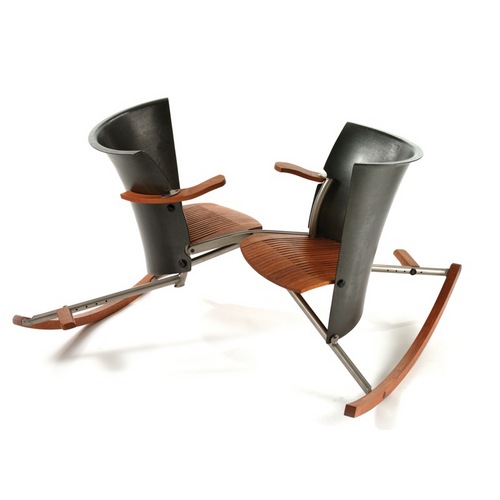
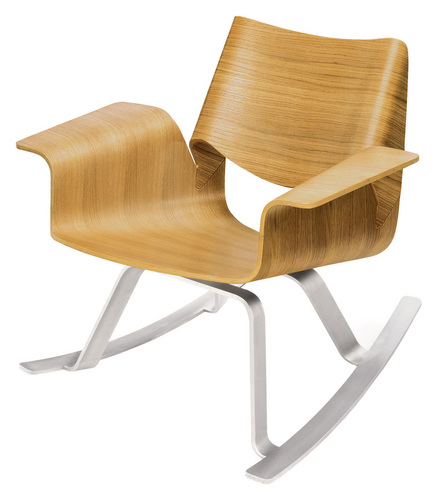

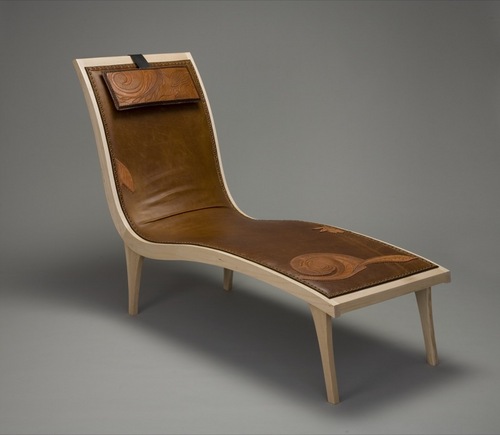
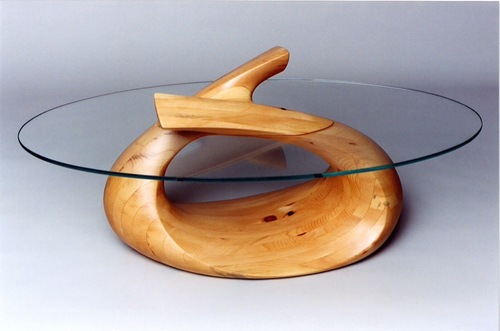
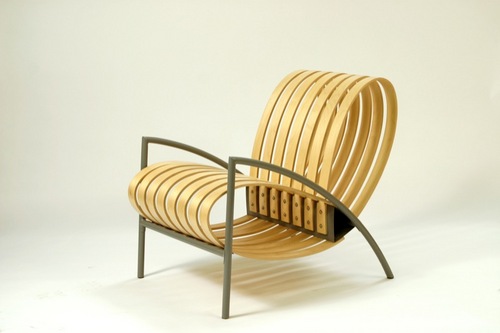
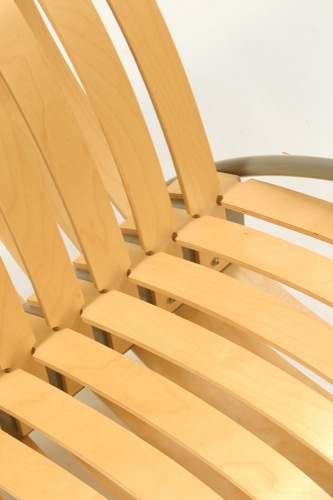
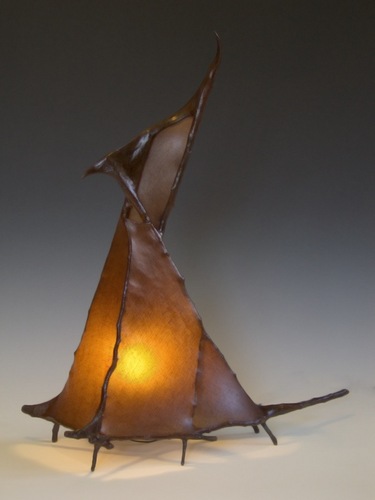
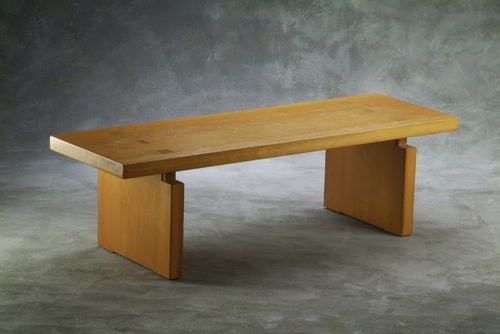
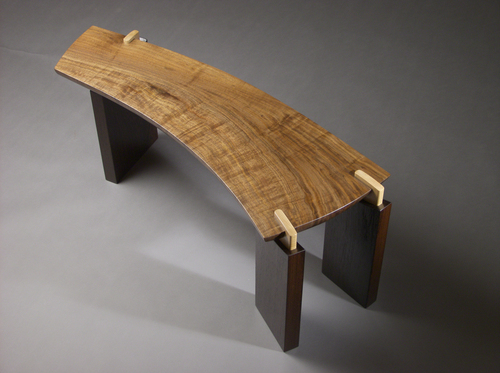
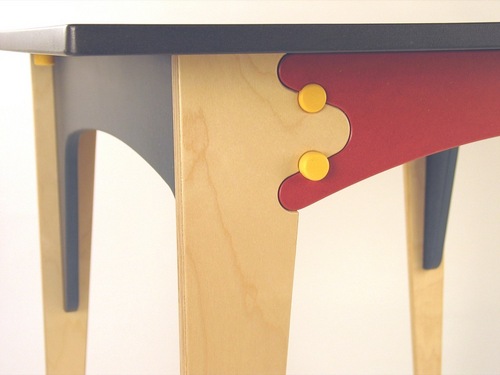
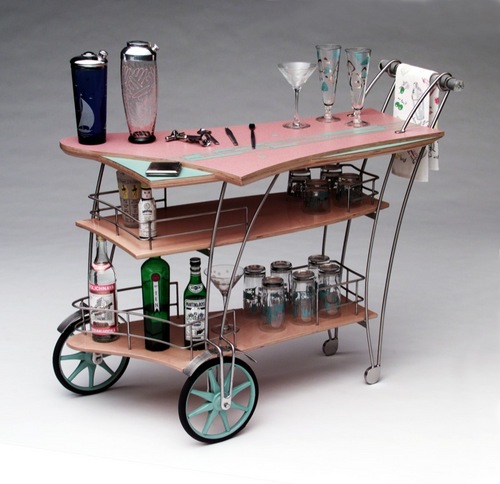
I HAVE A CONFESSION TO MAKE. The week prior to checking out Functional Sculpture: Furniture from the Upper Midwest, I visited the Ikea store in Bloomington looking for new office furniture. For the past ten years, my desk has consisted of an old door propped up on milk crates and cinder blocks; my book shelves were assembled with scraps pulled from the dumpster of a local cabinet company. Not the most aesthetically pleasing décor, but it is cheap and effective. Over time, however, the ugly inefficiency of that set-up has left me fearful that such sloppiness would begin imprinting itself on my very thought process. Design, I have come to realize, not only reflects, but also affects the lives we lead.
So how does Ikea fit in here? I ended up purchasing two book shelves, some stainless steel legs, a desktop to match, and a small library cart. I have to admit, I genuinely like shopping there, even if it is a bit overwhelming. Their products have their own form of integrity. They are honestly dishonest: most pieces are simply cheap particle board wrapped with a thin veneer, and they don’t pretend to be anything else. Simplified design that’s meant to pack flat lends the work a hand-me-down aesthetic traceable to the Bauhaus movement. Like the hot dogs that sell for 50-cents on the lower level, Ikea’s furniture is decent, cheap fare to help you get through the day; it doesn’t pretend to be home cooking.
In this way, the products there are (for the most part) internally coherent. That consistency allows Ikea furniture to play surprisingly well with others. In my new office, the new pieces take their place next to a coffee table, custom-made by MCAD graduate John Bruhl, with minimal cognitive dissonance. Perhaps, in days gone by, there would have been something vulgar about placing cheap, mass-produced structures next to beautifully hand-crafted, functional sculpture; but it works for me because theyre each honest in their own way.
Visiting Functional Sculpture, these same concerns rise to the surface in my reactions to the exhibited works. I’m not necessarily worried about whether a piece is practical or not. The real question is: Does the work have internal integrity? Does it honor the rules it has established for itself? By that criteria, when I assess the work in this exhibition the results are mostly positive.
One of the first works I encounter is Bulls Horn by Cameron van Dyke, a leather and twine stool of remarkable purity. Its flowing, organic form is beautifully complemented by the meticulous hand-stitching of the seams. Nothing is hidden here; the method of construction becomes a part of the work itself. The design feels natural, inevitable, and supremely human.
At the other end of the scale is Miles by George Mahoney. Based on the detail image on the show invitation, I was really looking forward to seeing this bent birch plywood and steel chair. From across the room, it does indeed look dramatic and inviting. But, upon closer inspection, that initial glimpse wavers; the piece simply is not entirely consistent. The visibly bolted and constructed nature is very appealing, even seductive. But when I peer into the awkward triangular structure supporting the wooden slats, I see not a continuation of the theme, but an attempt at obfuscation. Instead of visible nuts or some other direct elaboration of the structure, there are threaded attachments which appear to have been welded with uneven beads that called for more care and attention of finish. The metal frame in general feels unresolved, leaving the overall impression of a form caught between candid construction and modern cleanliness. Perhaps it is no coincidence that adjacent to it is another potentially interesting exploration that falls prey to similar problems, Double Rocking Chair by Thomas Oliphant.
Compare these two works with the chairs by Blu Dot and Dan Cramer on the other side of the gallery which succeed in achieving a confidently clean, modern effect. Here, the organic is constrained and mixed materials are expertly integrated. The results may be rather cold, even too corporate for some; but that is a matter of taste. By the criteria they establish for themselves, high-end institutional office design, they succeed.
The two music stands and bench by Ross Peterson are exquisite and demand close attention. The subtly sculpted edges throughout the works are especially satisfying; their construction can only be described as assured.
Bert Taylor‘s computer designed tables demonstrate the range of work in the exhibition and the variety of approach to furniture design today. The pieces cry out to be played with, manipulated, and repositioned, which makes them difficult to fully evaluate without doing so. I suspect the design possibilities are somewhat less than infinite, which is to be expected and yet still disappointing. The structures bespeak a nimble intelligence that embraces the unique nature of the fiberboard, plywood, and synthetic wine corks of which they’re made.
There is something for everyone here: the wonderfully architectural benches by John Nesset, a sculpted coffee table by Carl Gromoll, idiosyncratic bent willow chairs by Clifton Monteith, witty assemblages of Tom Loeser. The one constant throughout is the emphatically clear imprint left on each creation by the character of its maker.
It is a difficult time for artisans and designers creating custom furniture today. With increased competition and advances in production technology and design, they are under assault from all sides. But at their best, these artists achieve a level of conscious integrity that remains unrivaled. What can a maker bring to the table (and chair) that Ikea cannot? The answer is with a combination of intelligence, skill and wit quite a bit.
About the writer: Sam Spiczka was was born and raised in rural Minnesota near St. Cloud. He is a sculptor who, early on, became captivated by metal through the experience of working at his family’s welding shop. Though he briefly studied art and philosophy at Gustavus Adolphus College, his true education has come from Nature, the example of past sculptors, and the craftsmanship of his father. His award-winning sculptures have been exhibited nationally including at DeCordova Museum and Sculpture Park, the Rochester Art Center and Franconia Sculpture Park. You can see a new exhibtion of Sam Spiczka’s sculpture, Midwest Gothic, at the Alice R. Rogers and Target Galleries, St. John’s University through April 27, 2008.
What: Functional Sculpture: Furniture from the Upper Midwest
Where: Carleton College art gallery, Northfield, MN
When: Exhibition closes March 10, 2008.